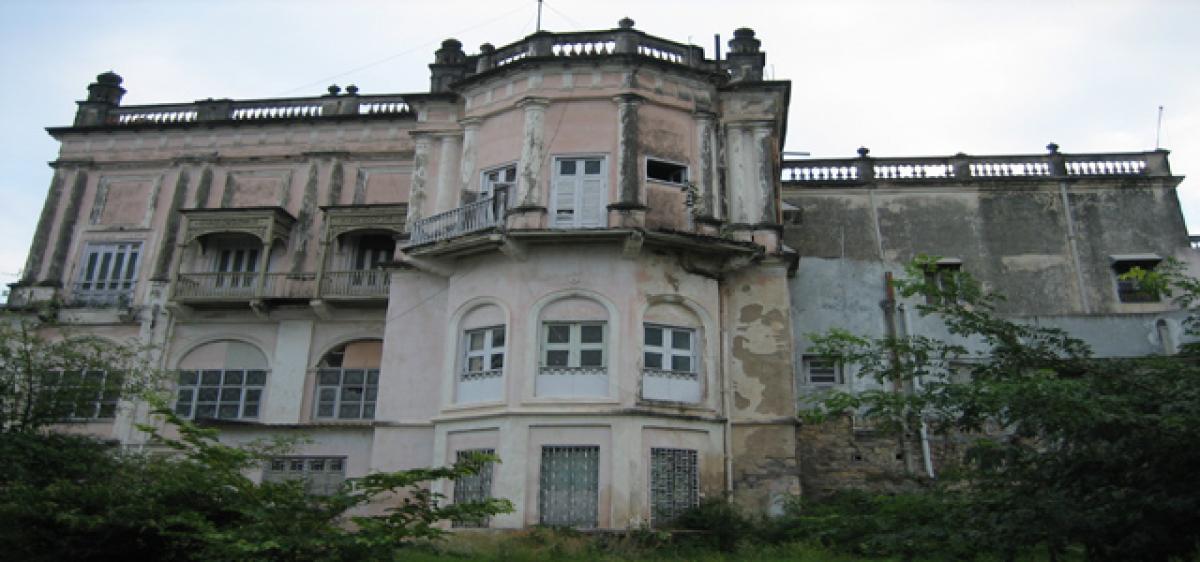Live
- Tirumala Salakatla Brahmotsavams to begin on October 4, here is schedule
- Pink Power Run for awareness on breast cancer held in Hyderabad, CM Revanth Reddy attends
- Students exhorted to work hard to scale heights
- Officials told to submit proposals for Guntur channel extension
- KIMS Ongole organises 3K walk
- Gold rates in Visakhapatnam slashes today, check the rates on 29 September, 2024
- Gold rates in Vijayawada slashes today, check the rates on 29 September, 2024
- AI and the future of immersive experiences: Bridging tangible and intangible heritage
- Budameru flood victims eagerly wait for compensation
- Discovering Self Love
Just In

Recent experiences taught us that heavy rains mean having to live with flooded streets and stinking sewers, traffic jams and vehicle breakdowns, colds and infections.
Recent experiences taught us that heavy rains mean having to live with flooded streets and stinking sewers, traffic jams and vehicle breakdowns, colds and infections.
But it is not a mere inconvenience but outright dread that heritage preservation professionals feel at pouring rains, as danger looms large for fragile historic buildings. Every monsoon, the Municipal Corporation announced demolition of dilapidated old buildings, which are in a dangerous condition.
Citizens of Hyderabad still vividly remember the inconvenience caused by recent heavy rains but the damage due to such a deluge is deeper and wider on our built heritage, in Hyderabad says Vasanta Sobha Turaga
And we carefully go through old dilapidated buildings listed by the Greater Hyderabad Municipal Corporation (GHMC), if they have included any heritage structures.
If some structures are pulled down for their poor condition, there are other reasons too for including them in the hit list. It has become easier for the GHMC to clear old dilapidated structures ever since the government repealed Heritage lists and regulations.
The Ramgopalpet police station, the historic 115-year-old James Street Police Station in Secunderabad, was asked to be vacated by the GHMC as it is said to be on the verge of collapse and is ‘obstructing the traffic’ too on the
RP Road. The 100-plus-years old Osmania General Hospital building is risky for the staff and patients and so was proposed for demolition for its insufficient and outdated facilities. The Chest Hospital building also faced imminent demolition in Erragadda for relocating the state secretariat on the hospital land.
There are reports that the Old Jail in Monda Market has caved in and a portion of Errum Manzil is in a very precarious condition. The City Light Hotel in Secunderabad, although it was not a listed heritage structure, collapsed a few years back, killing 13 people and injuring many others.
Of course, dilapidated buildings are unsafe for habitation and human life should be protected under all circumstances. Old buildings, which are not repaired and well-kept, stand wobbly and are usually unsanitary and unfit for human habitation. The condition worsens during monsoons.
But accidents do happen. In buildings under construction/repair, flowing water under the supporting scaffolds, takes the soil away, bringing the structure down. Or extra load put on the upper floors, more load than the load-bearing capacity of the structure can be one of the reasons for collapse – this can easily apply to the cell phone towers and hoardings that are erected on the terraces of buildings.
Most often, roofs collapse when the water drainage system is clogged and not cleaned, leading to stagnation of water on the terrace, seeping into the roof and sucking off its strength and leading to its collapse in the long run.
Chajjas over doors and windows, verandahs and porticos stop rain from entering into interiors. Water sprouts are made on the roof to drain off water from terraces to flow into rain and storm water drains.
The building’s systems work on sunny days and during normal rains. In places like Hyderabad, which does not fall into a cyclone zone, there is no need for extra structural details to take care of extreme climates.
The strength of building materials depends on the range of temperature and moisture levels. Prolonged exposure to excess moisture and/or higher/lower temperatures damaged building materials.
Wood rots, steel rusts, concrete loses its grip, bricks get crushed, cracks develop, stones break. In the absence of proper ventilation and excess moisture, fungus, algae, etc, grow and materials decay. Continued exposure to external strain leads to the deterioration of building materials and lowering their structural strength.
“A house is a machine to live in,” said the legendary architect Le Corbusier. Old or new, the building preservation principles are the same. Buildings and building systems are to be maintained regularly.
Old Heritage buildings are usually in a poor condition, because of their non-maintenance over a prolonged duration. The condition worsens if distress is not nipped in the bud.
A few years back, the second floor of the Durbar hall building of the 200-year-old former British Residency, the Koti Women’s College, caved in when it rained outside and gradually collapsed. The place is now locked up for the safety of the students and staff, and the building is protected from further damage.
It is high time we understood that heritage buildings are to be preserved for posterity, not just for their use of humans, but for their intrinsic antiquity, aesthetic, architectural, historical values.
While natural disasters are anticipated and prepared for in the modern urban management systems, it is the old buildings that face neglect.
Adequate policies, financial allocations should be made and action taken to preserve historic buildings under all conditions.
To provide them with umbrella care, so to speak. Heavy rains and flooding aggravate their deterioration and care should be taken to restore and repair the precarious buildings.
When there is a calamity, it is the people, who should be moved out. Not just for protection of human life but also that of the invaluable heritage building.

© 2024 Hyderabad Media House Limited/The Hans India. All rights reserved. Powered by hocalwire.com







